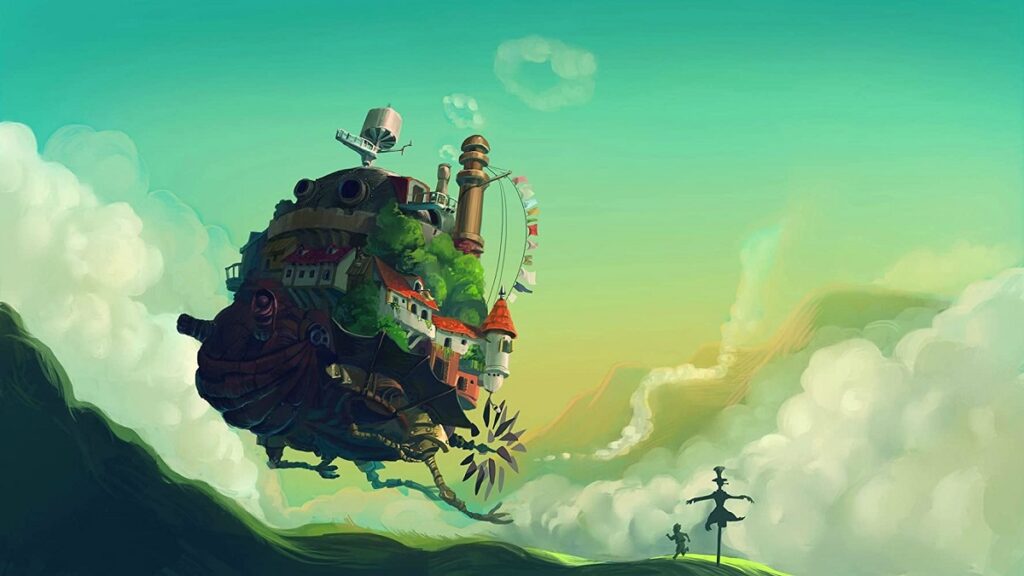

In fact, this would have been truer to the book: from page one, Sophie is characterized as “the most studious” of her sisters and as being disappointed when her books told her “how little chance she had of an interesting future.” (p. Rather than making a face at her reflection, Sophie could have been shown throwing away clearly beloved adventure books. Sophie could easily have yearned for freedom or for adventure, even without the explanation about her family troubles.

While it’s definitely easier to show unhappiness with one’s looks than a complex interplay of grief, familial duty, and giving up one’s dreams, it’s not the only option the film could have settled on. Consequently, it’s easy to infer that this antisocial behavior is normal for her. The audience sees that Sophie is lonely, but is not given a reason for why. However, the movie has to make a choice: Show how Sophie ended up so lonely, or dedicate more time to the plot? Because this particular story includes flashy wizardry, war, and time travel, they ultimately cut Sophie’s back-story. But even though she won’t admit it, she still wants to have her own adventure and the resulting internal conflict causes her to withdraw socially. As the eldest in her family, Sophie resigns herself to working at the family hat shop while her younger sisters are sent off to glamorous apprenticeships. Her father has passed and her stepmother can no longer afford to keep three daughters in school. The book explains to us that Sophie’s self-isolating behavior is unusual. The downside to this efficiency is that there is not always room for context. Both deliver the same emotional message: Sophie works too much and is lonely. While working in the hat shop, Sophie turns down an offer to join coworkers on an outing but stares longingly out a small window. Compared to the 12 pages that describe Sophie, her family’s recent financial trouble, and the duties she has taken on in their shop to help out, the movie dedicates only two minutes to this sequence. The best demonstration of this in Howl’s Moving Castle is in our introduction to Sophie. In contrast, a novel has the time and luxury to delve into a character’s headspace. But because a picture is worth a thousand words, visuals are better-suited to streamlined narratives. Good cinematic storytelling is efficient. Because most movies are limited to somewhere between 90 to 180 minutes, their storytelling is compressed. Many of the plot and character differences between the book and film are directly tied to the format. Where the book closely follows Sophie’s investigation into Howl’s contract and Howl’s half-hearted search for a missing prince, the film focuses on Sophie’s relationship with Howl and the war they are trying to evade. There, she strikes up a deal with Howl’s personal demon: he will break her curse if she can break his contract with Howl.Īt this point, the plots diverge. Storytelling in Proseīoth the novel and film begin in the same way: after being cursed to become an old woman by a jealous witch, Sophie Hatter runs away from home and ends up getting hired as a cleaning lady for a rakish wizard named Howl who lives in a magical moving castle. So let’s take a closer look at the choices each made and how they impacted the final version of the story. But two factors figure significantly into the equation: the needs of each medium and the type of story each tries to tell. Without input from Studio Ghibli, it’s hard to say. Where the book is a fantasy that explores women’s roles in society, the film is a love story that heavily relies on visual shorthand.īut why did this change happen in the first place? It simply serves the purpose of the type of narrative it tells. This is not a bad change or one that undermines the story. While book Sophie overcomes her fear of failure by finally owning up to her dangerous recklessness and accepting the consequences of her actions, film Sophie finds that shedding self-doubt is what makes her beautiful rather than her physical appearance. In both versions, the curse that transforms her into an elderly woman is also the catalyst she needs to shrug off these burdens.īut where Sophie starts and ends is enormously different. In both versions of the story, Sophie is a young woman trapped by societal expectations. One of the biggest changes is the character arc of our protagonist, Sophie Hatter.


 0 kommentar(er)
0 kommentar(er)
